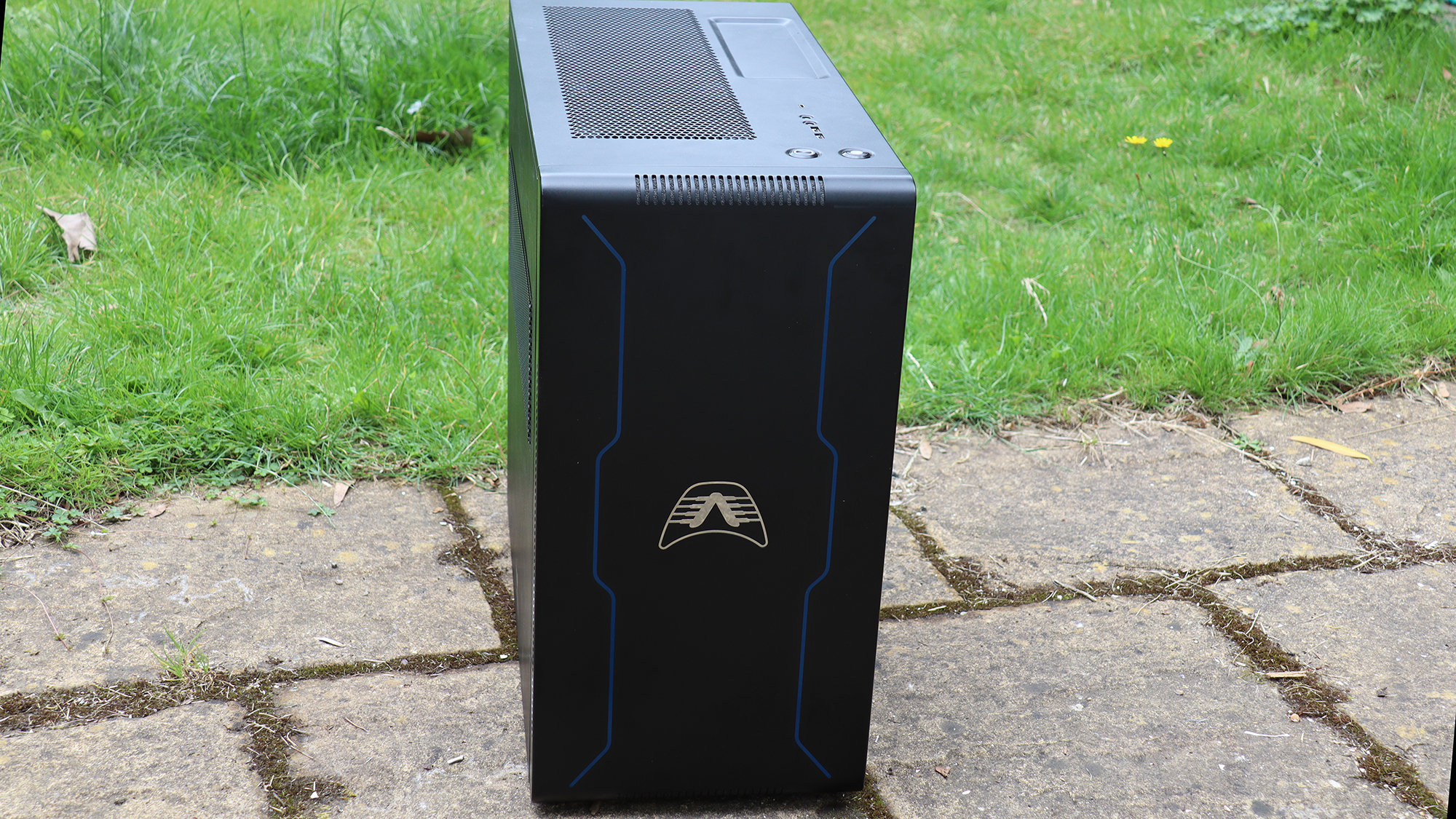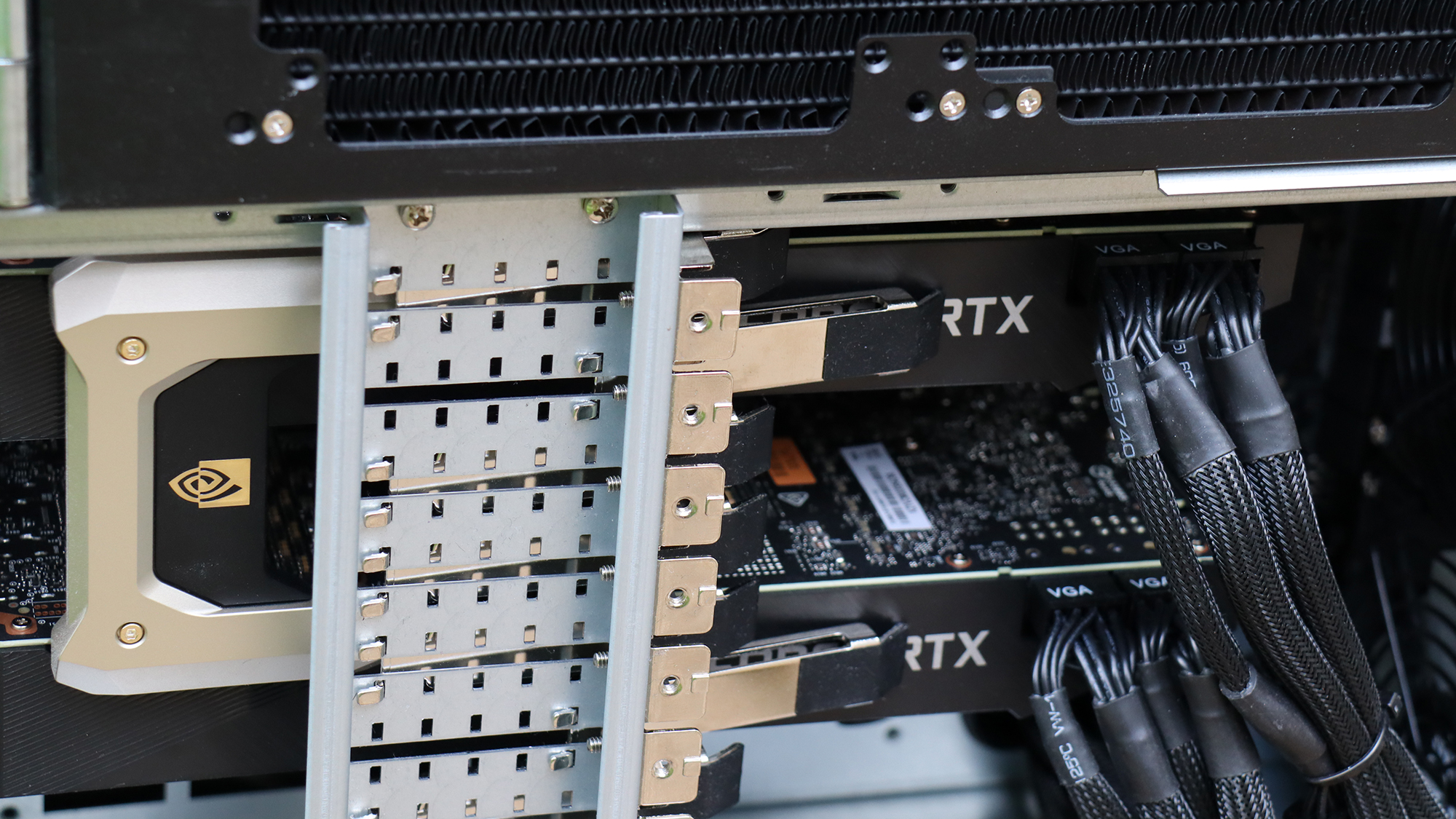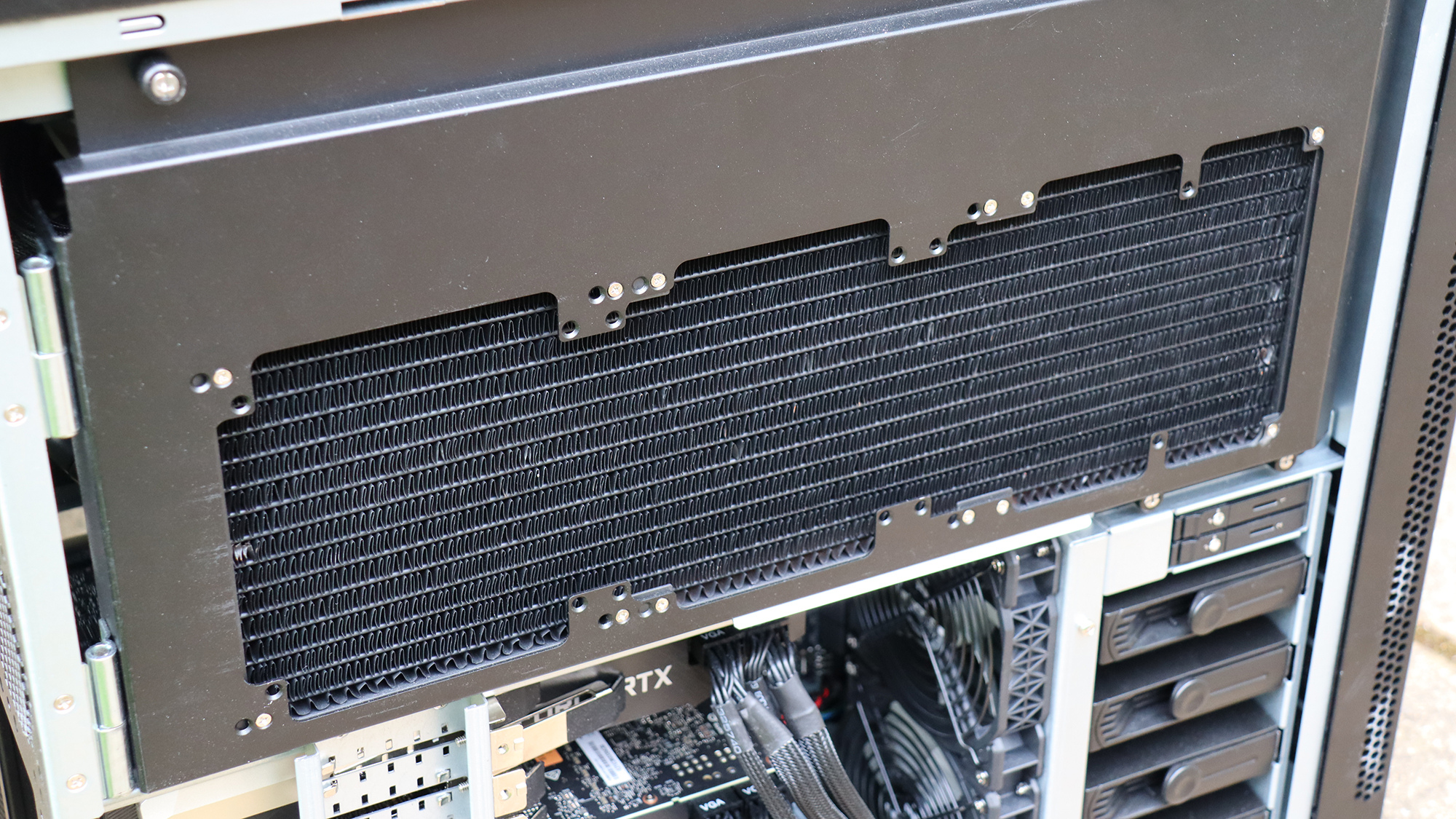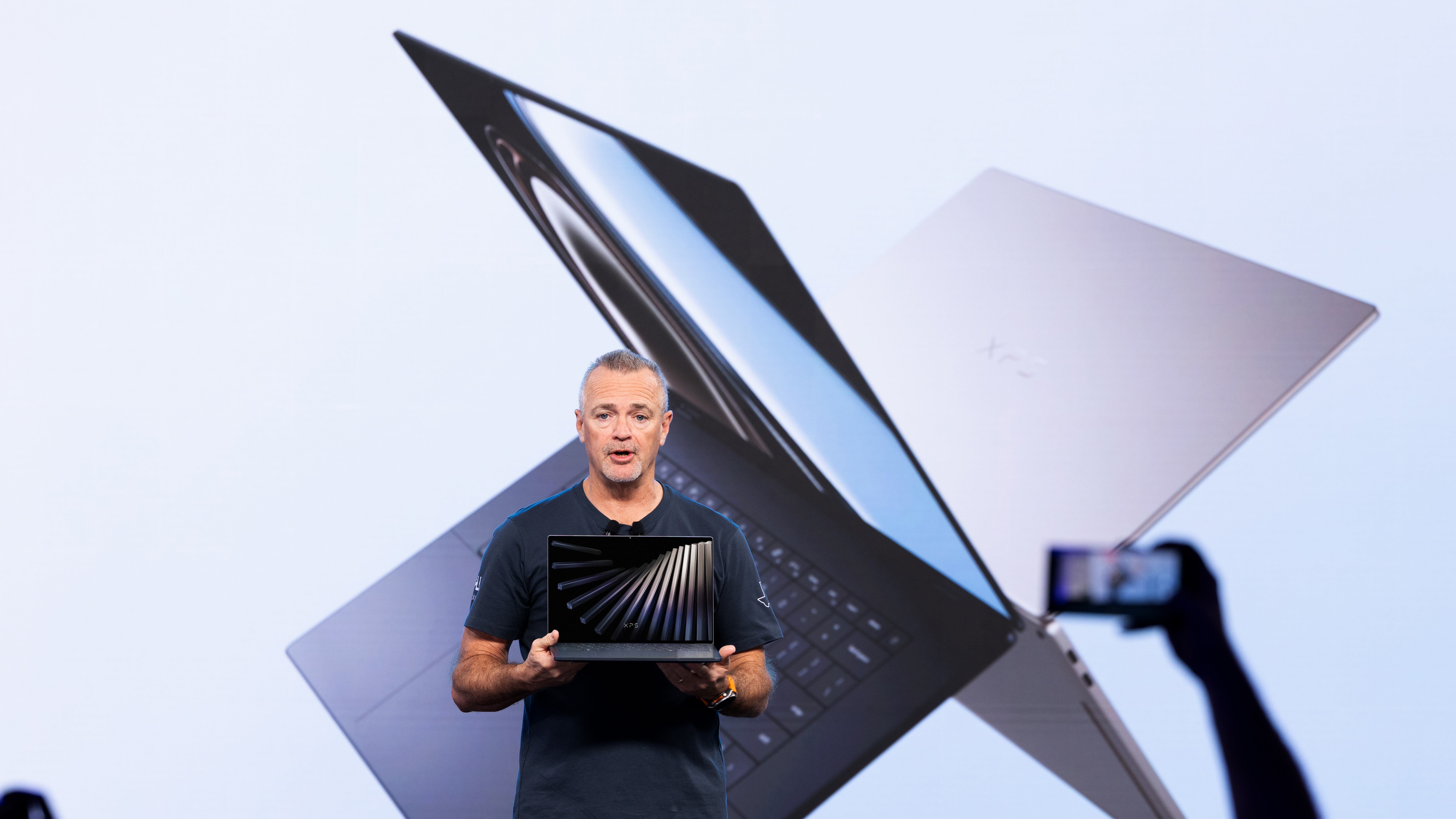Armari Magnetar X200 4.5GHz 28c WS review: The world’s fastest workstation?
Thanks to 28 overclocked Xeon cores, Armari’s X200 is the fastest single-socket workstation we’ve ever tested – by some margin


The X200 showcases what Intel processors can do when given a no-holds-barred platform to run on, with the fastest single-socket performance we’ve seen and oodles of GPU compute grunt on tap too.
-
+
Fastest CPU performance we’ve seen; Unbeatable 3D rendering; Invincible video encoding; Bespoke custom-design chassis built for dependable speed; Huge amounts of GPU compute ability
-
-
Expensive; Very heavy; Needs two power connections; Consumer graphics not ideal for CAD

Intel may have conceded a lot of the recent headlines to AMD's increasingly competitive Ryzen, Threadripper and EPYC processors, but there's still plenty of fight in the old blue dog yet. Armari's X200 is a custom system made to order that is designed to get the very best out of what Intel has to offer for the workstation user. Inside this gargantuan system - the heaviest PC we've had in the labs - sits a super-powerful 28-core Intel Xeon processor. And that's not all this behemoth has to offer.
Armari Magnetar X200 4.5GHz 28c WS review: Processor and Memory
The Xeon in question is the Skylake-SP-generation W-3175X, which on its own would set you back nearly three grand. It doesn't have quite as many cores as the AMD Threadripper 2990WX, but it's not far off - 28, giving 56 virtual cores with Intel Hyper-Threading. The frequencies are also a little higher than AMD's flagship Threadripper. Nominally the W-3175X is a 3.1GHz processor, but up to two cores can run at 4.3GHz, and all 28 at up to 3.8GHz. These frequencies drop in AVX2 mode, and even further with AVX512.
However, although this processor is rated for a TDP of 255W, Armari has chosen to build it into a system with much more water-cooling potency than this would require, hence the huge X200 chassis. The upshot of the extra cooling is that more of the W-3175X's potential can be unlocked. Armari has set it up so that all 28 cores can run at 4.5GHz, eight can run at 4.6GHz, and four at 4.7GHz. This should provide a big performance hike in every kind of application. Again, these figures drop in AVX2 and AVX512 modes.
Alongside the 28 cores, Armari has given the X200 a sizeable 96GB of 3,200MHz DDR4 SDRAM. This may seem like an odd quantity, but the figure is tied to the fact that the Xeon processor has a six-channel memory controller, so you have to add memory in sextets rather than pairs, quads, or (in the case of AMD's EPYC) octets. As a result, the ASUS ROG DOMINUS EXTREME motherboard is populated with six 16GB DIMMs, leaving six of its 12 slots free for upgrade. You would need to populate all six with identical DIMMs to maintain six-channel memory performance, however.
Armari Magnetar X200 4.5GHz 28c WS review: Graphics acceleration
To go with the potent CPU choice, Armari has chosen to equip the X200 with not one but two graphics cards. However, this system is aimed more at GPU compute than 3D modelling, so the two cards are both consumer-grade NVIDIA GeForce RTX 2080 Ti accelerators. Nevertheless, these cards are the current fastest available. Each one has a huge 4,352 CUDA cores, running at a base 1,350MHz with a 1,545MHz boost.

The two cards also have 11GB of 1,750Mzh GDDR6 memory each on a 352-bit bus. The end result is 616GB/sec of frame buffer bandwidth, which is about the fastest currently on the market. Although these are consumer cards, they should still provide superb performance with most professional applications, and the amount of GPU compute power here will be enormous.
Armari Magnetar X200 4.5GHz 28c WS review: Storage
Armari's storage choice is unusual and Intel-focused. The main boot drive is an Intel Optane 905P 480GB U.2 SSD, and there's a 4TB Western Digital Ultrastar DC HC300 conventional 7,200rpm hard disk for more general capacity. But the latter has a trick up its sleeve in the shape of a 64GB Intel Optane M15 NVMe drive that is set up as a cache for the hard disk. The end result is performance that has a few surprises.
Sign up today and you will receive a free copy of our Future Focus 2025 report - the leading guidance on AI, cybersecurity and other IT challenges as per 700+ senior executives
The 905P provides sequential reading at 2,764MB/sec and writing at 2,453MB/sec, which are fast but not as quick as some of the latest NVMe SDDs, particularly the PCI Express 4 ones you can use with the recently released AMD Zen 2 platforms. However, Intel Optane has faster random access than conventional SSDs and a longer MTBF due to the way the underlying 3D Xpoint memory works.
The big surprise is how the M15 drive accelerates the hard disk. Thanks to the cache, you get sequential reading at 1,965MB/sec and writing at 921.4MB/sec. Obviously, if you were reading the whole 4TB drive in one go, performance would drop, but for frequently used files you're seeing much faster throughput than the underlying hard disk, which won't be delivering more than around 250MB/sec.
Armari Magnetar X200 4.5GHz 28c WS review: Chassis design
If awards were handed out solely on the basis of weight, the Armari X200 would already be the best PC of all time. This is without question the heaviest system we have ever reviewed. Part of the reason for this is that it has not one but two water cooling systems, to cope with the huge power draw of the Xeon processor when running at full pelt and overclocked. One radiator sits at the top of the chassis, and one vents out the side. The X200 is a bespoke custom design by Armari, designed specifically for the Xeon W-3175X and forthcoming AMD processors with high core density.

This accounts for a lot of the extra size compared to a system with a single radiator bank, and some of the weight, although the solid steel construction of the case is also a major contribution. Another reason is the presence of two 1600W power supplies. These aren't dual-redundant, but actually a necessity to keep this system up and running. With all 28 cores running at 4.5GHz, the Xeon CPU can draw as much as 750W on its own, and the two graphics cards could use 250W apiece, so you're approaching the abilities of a single PSU already with just these components.
The storage upgrade options aren't enormous considering the chassis size, but certainly more than adequate. On the rear are two externally accessible cold-swap 2.5in bays with U.2 connections (one taken by the Intel Optane 905P), and there are two more SATA 2.5in cold-swap bays inside, plus four 3.5in cold-swap bays. So you can add plenty of drives quickly and easily if you're using this system for a task where capacity is paramount, such as video editing. But unlike some of Armari's chassis, there is no space for an external optical drive.
The top of the case sports two USB 3.1 Gen1 ports, with minijacks for headphone and microphone, plus USB 3.1 Gen2 Type-C. The motherboard supplies a wealth of rear ports, including eight USB 3.1 Gen1, alongside four USB 3.1 Gen2 (two Type-C, two Type-A). There's the usual array of six audio ports, including optical S/PDIF. Last but by no means least is the pair of LAN ports, one of which is Aquantia AQC-107 10Gbit Ethernet, whilst the other is a more mundane 1Gbit Intel connection.
Armari Magnetar X200 4.5GHz 28c WS review: Processor performance
Looking at this system's obvious competition, our experience with AMD's Ryzen Threadripper 2990WX impressed us greatly, but it requires a lot of power and cooling. Some of the systems we've seen incorporating it haven't taken this into account, meaning that the cores slow down on a long gruelling task like rendering. Armari has avoided this with the X200, which has water cooling capable of dissipating over 1,000W, so there's no chance of its Xeon CPU throttling, even with the frequency enhancements.
The end result is the most incredible set of CPU benchmark results we have seen. The overall result in the IT Pro media benchmarks was an unbelievable 678 - way ahead of anything we've ever tested before. The scores that drove this were an incredible 864 in the multi-tasking section, and 649 in video encoding. The image editing score of 179 is good, but here the 4.7GHz CPU clock ceiling holds it back compared to processors with fewer cores that can run at higher frequencies.

Not surprisingly, with 28 cores this system is a rendering phenomenon. For reference, we ran the now-deprecated Maxon Cinebench R15, and the CPU result was an incredible 6,299. To put this in perspective, we see around 5,700 from a system using an AMD Ryzen Threadripper 2990WX, so this workstation is faster despite the four-core deficit. For an even more stark comparison, the PC Specialist Axiom with two 28-core Intel Xeon Platinum 8180 CPUs achieved 7,170, although these CPUs max out at just 3.2GHz across all cores. We don't have comparisons for this yet, but the X200 also managed 15,080 in the recently released Cinebench R20.
The benefits are even more pronounced with a longer render. We tried the Gooseberry benchmark with the 2.8 RC2 version of 3D animation software Blender. It took just 409.7 seconds, where the fastest 2990WX-based system we've seen took 663.77 seconds. Rounding things off, the single-core score of 5,610 and multi-threaded result of 80,509 in Geekbench 4 are well beyond anything we have ever seen in this test.
Armari Magnetar X200 4.5GHz 28c WS review: Graphics performance
The graphics configuration is aimed more at GPGPU than modelling, but you still get some great capabilities with some professional 3D applications. Generally speaking, the GeForce drivers are fine for 3D animation software but not so much for CAD, product design or engineering. The Cinebench R15 OpenGL result of 190.1 is great, and turning to SPECviewperf 13, 231.1 in 3dsmax-06 and 322.71 in maya-05 are superb. However, although 324.62 in creo-02 is very good, a Quadro RTX 5000 would be 50% faster, whilst 154.09 in catia-05 and 97.08 in sw-04 are about half as fast. You should also avoid using this card with Siemens NX, as the result was 21.5 in snx-03, whereas a Quadro RTX 5000 would be more than 20 times faster.
However, the two GeForce RTX 2080 Ti cards are there to provide compute power, and here the X200 is again a phenomenon. The LuxMark 3.1 OpenCL score of 18,422 is nearly three times that of a single Quadro RTX 5000. Putting this in a more real-world context, running the Blender Gooseberry render on CUDA took just 198.67 seconds - less than half the time it would take on a NVIDIA Quadro RTX 5000.
Armari Magnetar X200 4.5GHz 28c WS review: Verdict
In other words, the Armari X200 provides an unparalleled amount of performance for whatever you throw at it. You're not going to find anything faster unless you switch to a dual-socket configuration, and even then not by much, and not with the single-threaded abilities this system has to offer. This is unquestionably the fastest workstation we have tested, although you do pay accordingly (a more basic version is available for 7,994 exc VAT). Armari will be producing the X200 to order with a longer lead time than normal (six weeks, compared to a month or less), but if all-out speed is what you need, this system will be well worth the wait.
Verdict
The X200 showcases what Intel processors can do when given a no-holds-barred platform to run on, with the fastest single-socket performance we’ve seen and oodles of GPU compute grunt on tap too.
| Processor: | 3.1GHz Intel Xeon W-3175X (overclocked to 4.5GHz) |
| RAM: | 96GB 3,200MHz DDR4 |
| Graphics: | 2 x 11GB GDDR6 NVIDIA GeForce RTX 2080 Ti |
| Storage: | 480GB Intel Optane 905P U.2 SSD4TB Western Digital Ultrastar DC HC300 7,200rpm 2.5in SATA HDD with 64GB Intel Optane M15 NVMe cache |
| Operating System: | Windows 10 Professional 64-bit |
| Warranty: | 2 years (1st year onsite, 2nd year RTB parts and labour) |
| Website: | www.armari.com |
Dr James Morris has worked as a technology journalist for over 25 years, including spending nine years on the staff of market-leading computer magazine PC Pro, the last five of which were as the publication’s editor. He specialises in enterprise-grade software and hardware, with a particular focus on content creation. He launched a pioneering video channel for HEXUS.net in 2006 and ran the video reviews channel for TrustedReviews.com for four years. He also runs a successful online digital content and commercial video production company, t-zero communications Ltd.
Dr Morris is a prolific technology writer and contributes commercial content for major IT brands including AMD, BlackBerry, Dell, Cognizant, HP, and IBM. He published a book on artificial intelligence, Can Computers Create Art? in 2009. He is also an academic, and is currently Pathway Director of the MA, Interactive Journalism at City, University of London.
Previously, he was course leader for the BA in Web Media Production at Ravensbourne University. He has a PhD in Philosophy, Art and Social Thought from the European Graduate School in Switzerland, a Master's in Media Arts from the New School in New York, USA, and a Bachelor's in Social Anthropology from the London School of Economics.
Dr. Morris can be found on Twitter at @Cyberwest, or emailed at j@tzero.co.uk
-
 JFrog names go-to-market veteran as new CMO
JFrog names go-to-market veteran as new CMONews The experienced industry leader will lead JFrog’s global marketing activity as the firm enters its next growth phase
By Daniel Todd Published
-
 Productivity gains on the menu as CFOs target bullish tech spending in 2026
Productivity gains on the menu as CFOs target bullish tech spending in 2026News Findings from Deloitte’s Q4 CFO Survey show 59% of firms have now changed their tune on the potential performance improvements unlocked by AI.
By Ross Kelly Published
-
 Return of the XPS: Dell resurrects iconic brand at CES after customer demand
Return of the XPS: Dell resurrects iconic brand at CES after customer demandNews COO says "branding matters" as Dell bucks trend at CES to bring back beloved XPS
By Bobby Hellard Published
